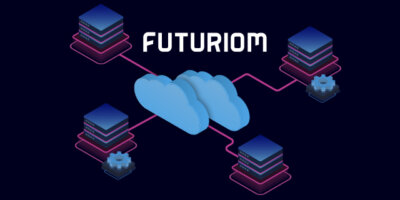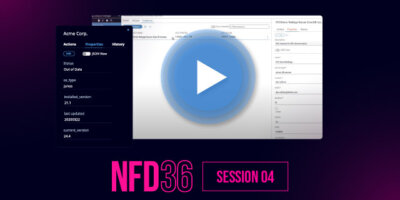Itential’s integration and orchestration capabilities make it easy to for networking teams to expose network services for self-service consumption by IT and App teams.
Your Challenges
Within most organizations, cloud networking has reset expectations around the ease and speed of networking. Cloud users have become accustomed to consuming cloud network infrastructure as an on-demand service – easy to order and available for immediate use. IT teams have used a similar model to make it easier to consume internal resources like storage and compute, but network infrastructure has been slower to evolve.
The ability to offer a compelling self-service network functionality comparable to offerings of the cloud providers has been difficult to overcome due to:
- The complexity of orchestrating network changes across multiple vendors and infrastructure domains.
- Disparate domain-specific software tools and stacks to manage network infrastructure.
- Reliance on network subject matter experts and manual efforts to create and manage network services.
- Dependence on traditional tools that are technically complex and time-consuming.
How Itential Enables Network as a Service
One key aspect of offering self-service networking is the ability to easily orchestrate across multiple systems in your organization. The Itential Platform’s unique integration capabilities enable organizations to quickly connect with their network, IT systems, and cloud platforms, providing a simplified approach to managing those integrations over time. Once your systems are integrated, your network teams can get started building workflows in a low-code canvas that can make changes to network and cloud infrastructure and utilize any IT systems necessary to provision new network services.
Itential’s capabilities make it easy to consume and enable self-service networking:
Integrate with Anything in Your IT Ecosystem
Without a single line of code, teams can quickly build integrations with your network, cloud, and IT systems, add new integrations as needed, and easily manage all of them over time. These integrations enable the platform to orchestrate any activity, even those that previously required engineers to manually log in to devices, applications, and inventory systems.
Ingest & Expose Existing Automations
Easily integrate existing scripts, Ansible Playbooks, Terraform Plans, etc. and make them available as a service. Teams can immediately evolve their existing scripts into self-service style offerings.
Rapidly Build New End-to-End Workflows via Low-Code
Quickly and easily develop powerful orchestrations using the low-code workflow design studio and expose those orchestrations for consumption as a network service. Using the design studio, network subject matter experts can replicate even the most complex network engineering logic on a simple graphical canvas.
Integrate Sources of Truth & Service Assurance
Itential’s integrations with external systems like sources of truth and service assurance systems enable teams to incorporate SLAs and performance assurance into their self-service offerings, allowing users to customize services the same way they consume cloud provider services – they can select high-guarantee services for mission-critical use cases, while retaining the option for lower-SLA services when appropriate.
Create & Expose a Catalog of NaaS Services
Workflows built in Itential that provision network services can be published via the Automation Catalog capability of the platform. The catalog can expose any of the capabilities of the platform, including ingested scripts and playbooks, functionality provided via integrations, or orchestrations developed within the design canvas.
How to Publish & Expose Network Automations as a Service with Itential
Offer Services the Way Users Want to Consume Them
This self-service catalog can be exposed to internal and external customers, making it easy for users to discover and request new capabilities in whatever method they need to – including APIs, portals, CI/CD pipelines, ticketing systems, ordering systems and more.
Regardless of how the end users want to consume the self-service networking capabilities, the Itential platform has the flexibility and capability.
NetDevOps, Self-Service, & Evolving the Network Change Process to be Consumable by Everyone
For API Users
Teams can expose automation and orchestration capabilities through Itential’s OpenAPI 3.1interface, which provides additional tools for developers to view and test API calls through a visual interface prior to launch.
Explore Itential’s API Docs
For CI/CD Users
The Itential Platform includes integrations with a wide variety of CI/CD tooling and pipelines, enabling DevOps teams to quickly incorporate powerful network automations and orchestrations as part of their pipelines.
Explore Itential’s CI/CD Solution
For Users of IT Systems like ServiceNow
Itential provides a native ServiceNow application to streamline the ability of teams to create and offer powerful self-service networking to ServiceNow users.
Explore Itential’s ServiceNow App
Frequently Asked Questions
What does “Network as a Service” mean in Itential’s model?
Itential enables networking teams to expose network infrastructure capabilities (e.g. provisioning, load balancing, firewall/security policies) as self-serve services. These services can be consumed by internal app, IT, or external teams via APIs, portals, or catalogs, with governance baked in.
How does Itential enable self-service networking?
Via low-code workflow design, integration to your existing cloud, network, and IT systems, and a catalog model. Teams can package existing scripts, playbooks, and configurations into offerings that non-engineer users can consume with request forms or API calls.
What are the biggest hurdles to implementing NaaS internally?
Common challenges include: integrating domain-specific tools and stacks across vendors; ensuring accurate source of truth (inventory, service assurance); defining catalog offerings; governance and security (who can request what); handling complex changes across domains.
How does Itential support SLAs and performance guarantees in NaaS offerings?
Itential integrates service assurance and external sources of truth so that catalog services can include SLA-based service levels. Users get options for “high-guarantee” services vs more basic offerings. Performance and compliance can be measured and surfaced to users.
Can existing automation (Ansible, Terraform, Python, etc.) be converted into NaaS catalog items?
Yes. Itential can utilize existing automation assets in governed workflows, then expose them as catalog items for self-service. No need to rebuild everything from scratch.
What governance & protection controls prevent abuse of NaaS services?
Itential uses RBAC, validation workflows, approvals, audit logging, and integrations to sources of truth to ensure self-service doesn’t lead to misconfigurations, drift, or unauthorized access.
Are APIs available for NaaS consumption?
Yes. NaaS services built in Itential can be exposed via APIs, portals, CI/CD pipelines, or ticketing systems so that users or automation pipelines can request services programmatically.
How quickly can organizations begin offering network services via NaaS?
Many start with low-risk, high-volume offerings (e.g. VLAN, DNS/IPAM, firewall rule provisioning) and see measurable usage and value in weeks. Then they expand their catalog and integrate with more domains over time.
What metrics should teams track to know their NaaS program is succeeding?
Useful metrics include: number of catalog offerings published, number of service requests fulfilled via NaaS, time from request to fulfillment, number of manual interventions avoided, utilization by different teams (IT, App, DevOps), service reliability / SLA compliance, and audit or drift incidents.
How does Itential’s NaaS approach compare to cloud providers’ network services?
While cloud providers offer built-in network services (VPCs, security groups, etc.), internal NaaS with Itential gives you control over multi-vendor, hybrid, and on-prem infrastructure in similar consumable form, plus governance, custom SLAs, and integration with your existing network estate.
- How a Global Biotech Company Standardized Network Automation to Eliminate Errors & Enable Safe, Secure Self-Service
- Defining Self-Serve Networking: What, Why, & How
- NetDevOps, Self-Service, & Evolving the Network Change Process to be Consumable by Everyone
- How SOC Teams Can Self-Serve Hybrid Network Security Services with Itential
- Delivering Network as a Service (NaaS) Capabilities Across Hybrid, Multi-Cloud Infrastructure
- 3 Capabilities Every Network Orchestration & Automation Platform Should Provide
- How Service Providers Can Transform Order Fulfillment with New Itential App for ServiceNow OMT
- How Itential Helps NetDevOps Teams to Expose & Deliver Self-Service Network Automations (NFD 31)
- How a Multinational Biotech Company Achieved Global Self-Service Networking with Itential
- How to Connect ServiceNow to Your Infrastructure with Itential
- Network Automation Maturity: Evolving from Process Orchestration to Self-Serve Networking
- From Scripts to Self-Service: How to Achieve Scalable Enterprise Network Automation with Itential
- The Rise of NetDevOps & The Shift Left for Networking
- AvidThink: Pipe Dreams & AI Realities—Networking’s Midlife Crisis
- Network Automation & Orchestration Maturity Model


